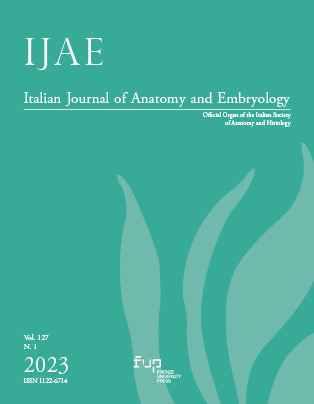Published 2023-08-28
Keywords
- auriculotemporal nerve,
- TMJ,
- pterygoid muscle
How to Cite
Copyright (c) 2023 Maria Grazia Poerio, Michele Runci Anastasi, Giovanna Vermiglio, Antonio Centofanti, Piero Cascone

This work is licensed under a Creative Commons Attribution 4.0 International License.
Abstract
The studies on the auriculotemporal nerve in humans are limited. However, we considered crucial to investigate the topographic relation between the auriculotemporal nerve and the TMJ region that can explain some of the symptoms in TMDs. The results derived from our experience in the anatomic dissection on 16 adult cadaveric heads were compared with what literature describes from 1971 to 2023. The results confirm the existence of a particular anatomic position of the ATN within the infratemporal fossa in direct contact with the lateral pterygoid muscle and the TMJ capsular region. Therefore, there is evidence of a potential entrapment mechanism involving the ATN caused by an internal derangement of TMJ or a spastic condition of the lateral pterygoid muscle. Through a detailed anatomical description of the ATN the present study aims to offer an explanation to the main sensory and otological symptoms that patients with TMJ disorders often complaint, from facial pain and paresthesias to external ear pruritus.

